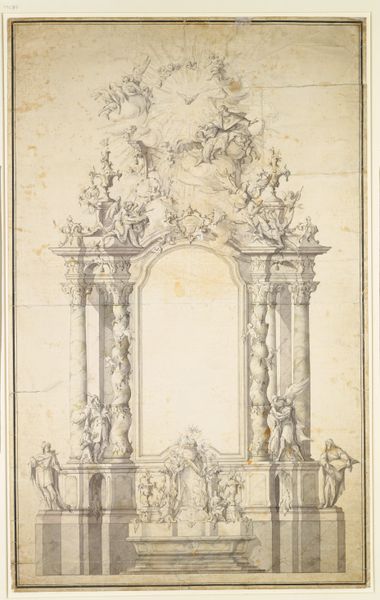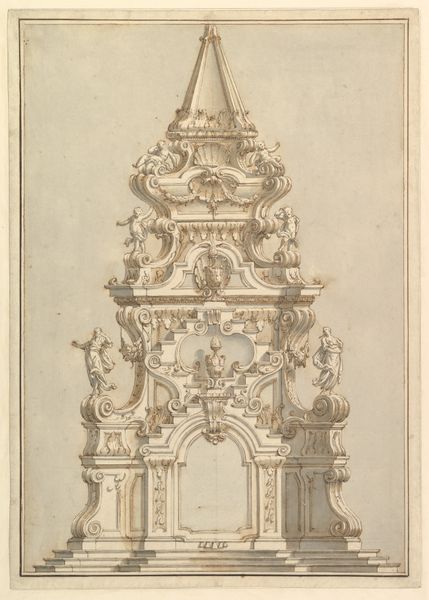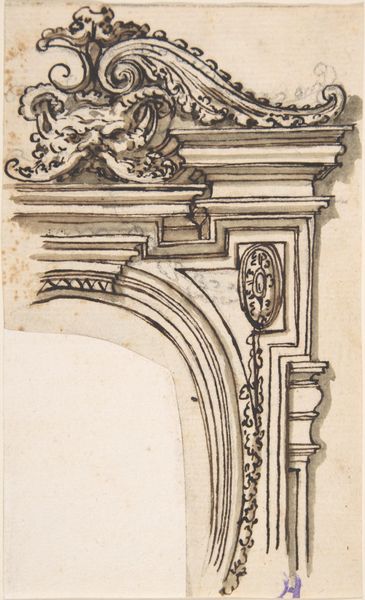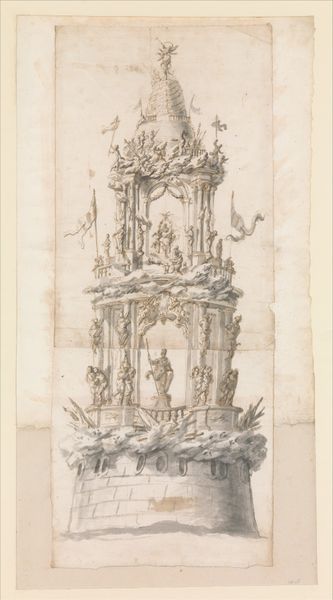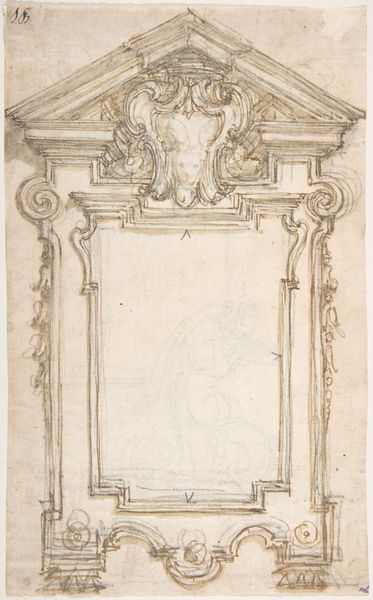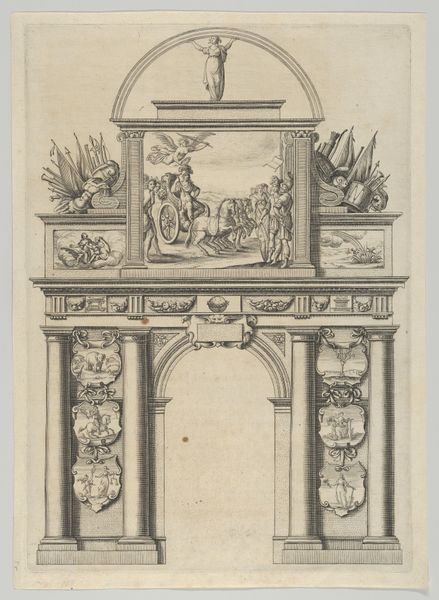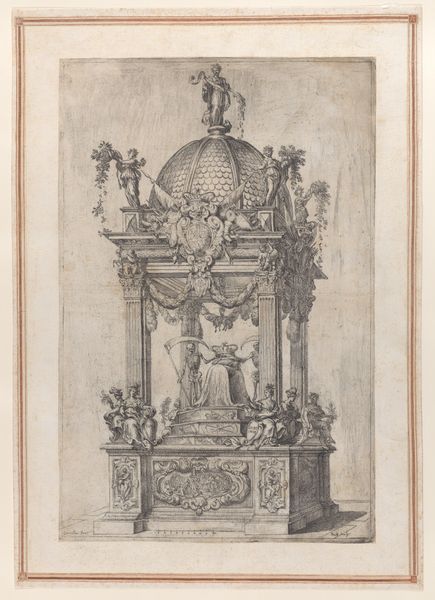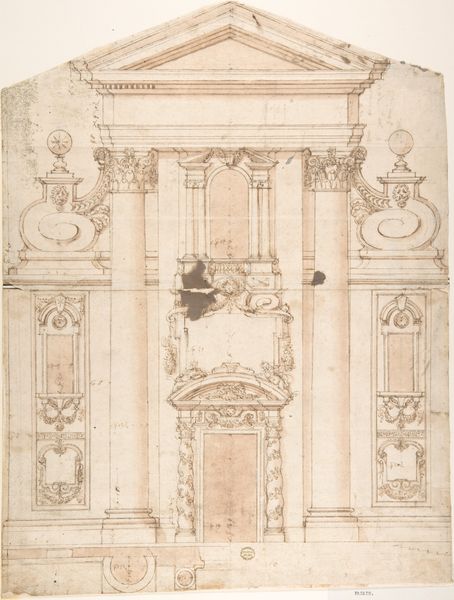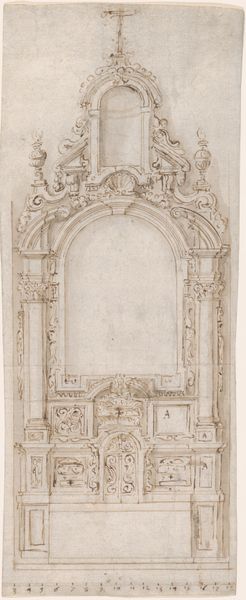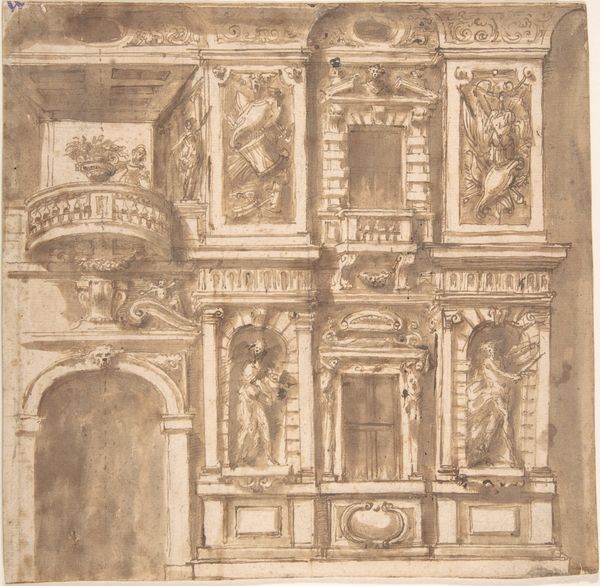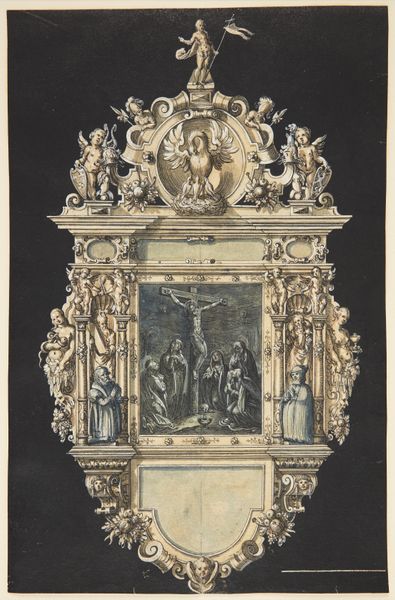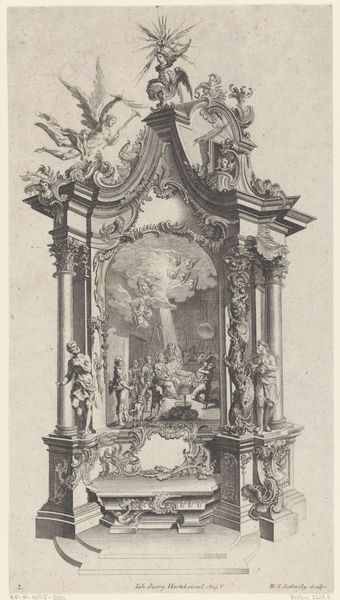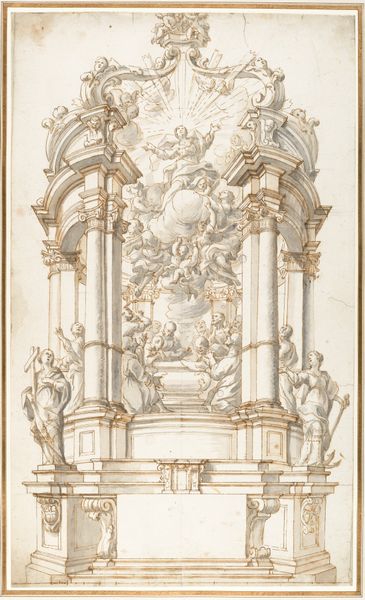
Design for an Altar with the Annunciation in the Central Panel 1700 - 1800
0:00
0:00
drawing, print, paper, ink, sculpture
#
drawing
#
baroque
# print
#
figuration
#
paper
#
ink
#
coloured pencil
#
sculpture
#
history-painting
#
watercolor
Dimensions: sheet: 7 5/16 x 6 5/16 in. (18.5 x 16 cm)
Copyright: Public Domain
Curator: This caught my eye right away – a sort of hazy vision of holy architecture, or what holy architecture might become. It's just fluid, almost dreamlike. Editor: This watercolor and ink drawing presents a "Design for an Altar with the Annunciation in the Central Panel." Attributed to an anonymous artist and created sometime between 1700 and 1800, it's part of the Metropolitan Museum of Art's collection. Curator: I feel like the anonymous hand wanted to capture the Baroque spirit, you know? That over-the-top energy—but just barely restrained it in the end. All that heavy stone filigree imagined here, yet sketched so delicately. The angels seem to float out from the altarpiece. Editor: Well, such preparatory drawings were crucial. An architect, a sculptor, or a patron would use a detailed sketch like this to visualize the project before committing resources. You can almost see the design evolving on the page. Note the classic Baroque hallmarks: the drama of the scene, the twisting columns, and of course, the divine light pouring down on Mary. Curator: And the light, definitely the light. All done in watercolor wash, it's so ephemeral and… and forgiving. You wouldn’t quite achieve that airy otherworldliness if it were sculpted from Carrara marble, would you? It makes me consider if rendering a sacred space with such gentleness itself could be seen as devotion. Editor: Perhaps the aim here was less about replicating reality and more about inspiring contemplation, especially given the role that imagery played in disseminating Counter-Reformation ideals. Imagine how impressive the completed project would have been as it proclaimed power and faith with ornate elements inside the church. Curator: I do wonder though if the artist felt at all burdened or freed by that charge when translating sacred, otherworldly events. Like…where does a painter locate themselves when drawing God's design? I do feel that tension, if it exists, lends another beautiful layer of humanity to the altarpiece. Editor: It prompts us to think critically about how cultural institutions once used artwork. The art became the central tools by which political and social structures spread messages to and shape public sentiment. Even the most ethereal vision had a down-to-earth purpose, as seen in this wonderful piece of architecture! Curator: Oh, certainly, what a lovely vision of devotion through structure. Editor: Indeed, this subtle dance between faith and design has offered us plenty to consider.
Comments
No comments
Be the first to comment and join the conversation on the ultimate creative platform.
